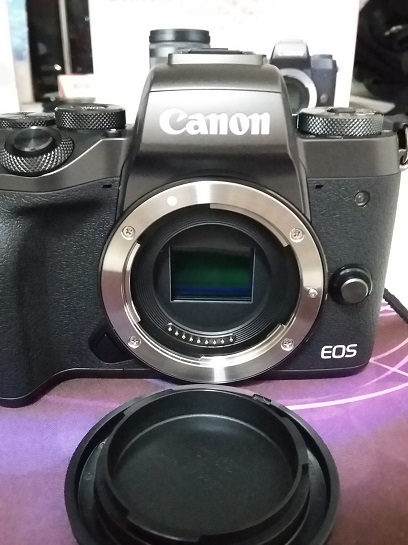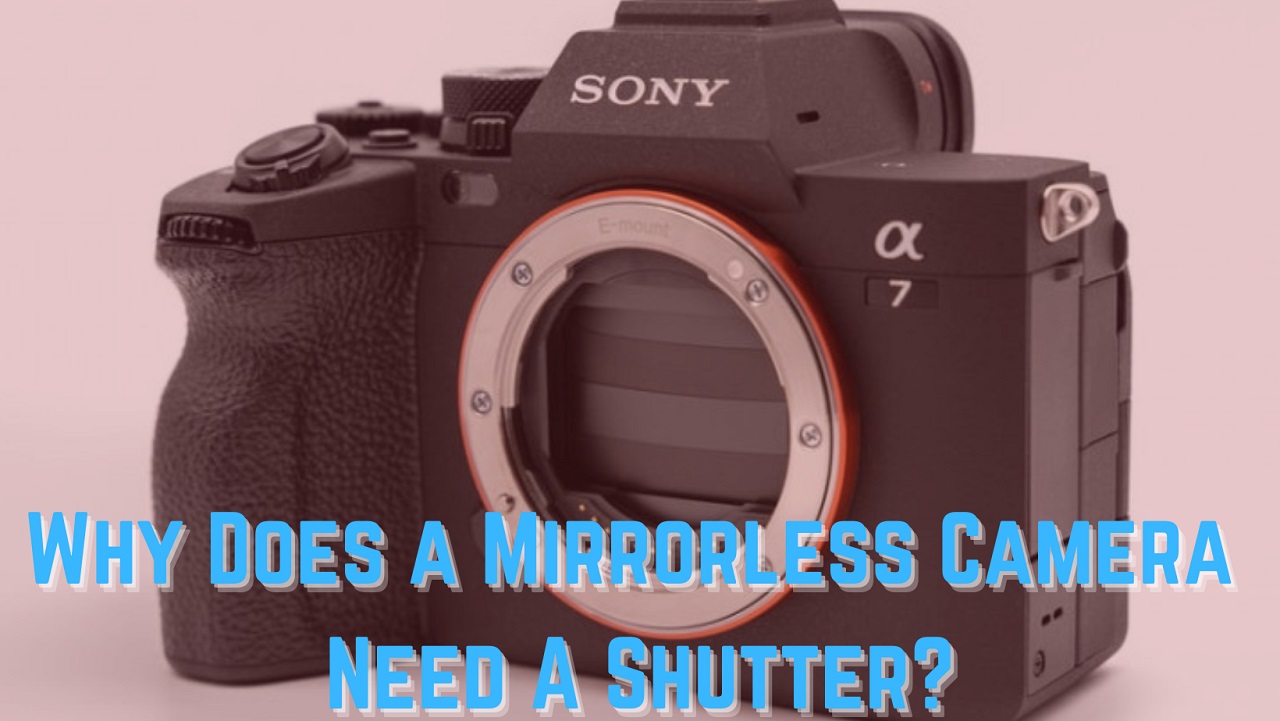Today I will be discussing why does a mirrorless camera need a shutter. And as a beginner, you might have wondered and heard about mechanical shutters and electronic shutters.
Also known as a shutter curtain, a mechanical shutter is still widely utilized in mirrorless cameras.
While in some newer mirrorless cameras…
Both the mechanical shutter and electronic shutters are combined to work hand in hand.
Like DSLRs…
Mirrorless Cameras need a shutter to block the light and or allow the light to pass through and into the image sensor.
The shutter is necessary to have an even and properly exposed image.
So, join me as we break down why shutters are needed.
Why Does a Mirrorless Camera Need a Shutter
A Mirrorless Camera needs a shutter to block and or allow the light from reaching the mirrorless camera sensor. SHUTTER is a critical part needed to have evenly or properly exposed captured scenes. A shutter is also known as a shutter curtain. Two kinds of shutters are widely used in mirrorless cameras- Mechanical shutters and Electronic shutters.
1) A SHUTTER is needed to BLOCK the Light
Foremost, we need to understand that the image sensor of a mirrorless camera is always exposed.
That’s right… and it is by design! As shown in the below image.

And as you are aware… a constant light aimed at the image sensor will result in an over-exposed image!
A SHUTTER blocking the light from hitting the image sensor is the first process of a sequence of timed shutter movements to obtain a properly exposed image.
When you’re ready to take a snapshot and once the shutter button is pressed…
This is what happens ideally.
➡️ Mirrorless Cameras that are equipped with Mechanical Shutter only
- The first shutter curtain will move up to cover the sensor blocking the light from hitting it.
➡️ For Mirrorless Cameras that are equipped with Electronic Shutter
- Electronic shutters work similar to mechanical front-curtain shutters but electronically- it will turn the sensor OFF and ON instead, (electronic shutters were designed to resolve shutter shock caused by the mechanical front-curtain shutter)
- Besides a mechanical shutter built in front of the image sensor, there are mirrorless camera brands that have an EFCS (Electronic Front-Curtain Shutter) feature that can be enabled or disabled (you can verify your manual or the mirrorless camera spec)
- Likewise, there are also mirrorless cameras that have the EFCS enabled by default (one good example is my Canon EOS M5, yes this model has enabled EFCS)
- There are two types of electronic shutters used in mirrorless cameras, the rolling electronic shutter and the global electronic shutter
- Rolling Electronic Shutter– way of capturing a scene by scanning the sensor rapidly from top to bottom (left to right, then next row from right to left, and so on)
- Global Electronic Shutter– allows the light to enter or hit the entire sensor and captures the scene all at once
2) SHUTTER is needed to ALLOW the Required Amount of Light to Hit the Sensor
The moment the shutter button is pressed, the mechanical front-curtain shutter moves up to cover the image sensor and will then moves down. And in the case of an electronic shutter, it will turn OFF and ON the sensor (as explained above).
The succeeding sequence is that the rear shutter will move down, completing the process of exposure to light.
To elaborate, this is what happens in detail;
➡️ Mirrorless Cameras that are equipped with Mechanical Shutter only
- After the mechanical front-curtain shutter moves up, the same shutter will move down to now let the light enter or hit the sensor
- As the front-curtain shutter moves down, the second shutter (the rear-curtain shutter) will now also slide down to cover the sensor completing the exposure… then it will go back up, readying for the next shot or exposure
➡️ For Mirrorless Cameras that are equipped with Electronic Shutter
- As the shutter button is pressed, the electronic shutter will turn OFF the sensor and then turn it ON again, allowing the light to hit the sensor… then next, the mechanical rear-curtain shutter will go down to block the light as it only allows the required amount of light to have a properly exposed image
- And as mentioned earlier, there are mirrorless camera brands that have an EFCS (Electronic Front-Curtain Shutter) feature that can be enabled or disabled (so this gives you the ability to set it according to your need, you can check your manual or the mirrorless camera specs)
The above two illustrated processes are critical in getting an evenly lighted and sharp image.
… or in other words, properly exposed image.
3) What is Focal-Plane Shutter
Focal-Plane Shutter is the term used for mechanical shutters that are built in front of the image sensor.
This type of mechanical shutter is the most widely used for mirrorless cameras designed and fixed on the camera body right in front of the sensor.
The below video talks about focal-plane shutter and shutter speed.
I have also discussed shutter speed in my previous article about How To Learn Basic Photography on Your Own, as it is one of the most important elements to have proper exposure.
Remark: Another form of the mechanical shutter is called the Leaf Shutter built inside the lens. Mostly used on fixed lens digital cameras such as point and shoot as well as medium format cameras.
Final Thoughts
We have established the reasons why mirrorless cameras need a shutter.
To recap…
A shutter is needed due to the following;
- First, to block the light from hitting the sensor
- Second, to allow the required light to enter or hit the sensor
We have also identified the types of shutters, they are the following;
- Mechanical Shutter, and
- Electronic Shutter
Whereas, we also now know two types of electronic shutters, they are as follows;
- Rolling Shutter
- Global Shutter
And we also now understand and are aware that the integration of an Electronic shutter into mirrorless cameras is to resolve the issue of shutter shock, which is caused primarily by the mechanical front-curtain shutter.
So, there you have it, folks.
Once again thank you for reading. Please leave a comment if you have questions or suggestions, and I will try to answer them as soon as I can and to the best of my knowledge.

About Rowe Medialdea:
Hi, I’m Rowe, a mirrorless camera and photography enthusiast. We have created this site to be of help (especially to beginners) by producing easy-to-understand content about mirrorless cameras! Welcome to our website!

